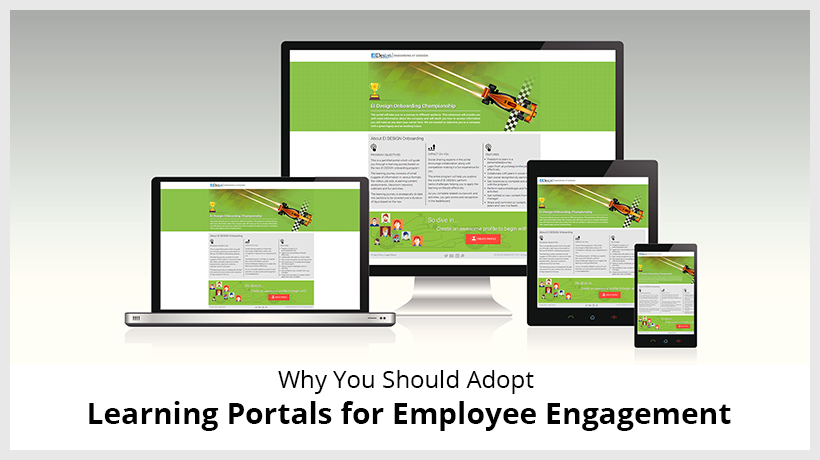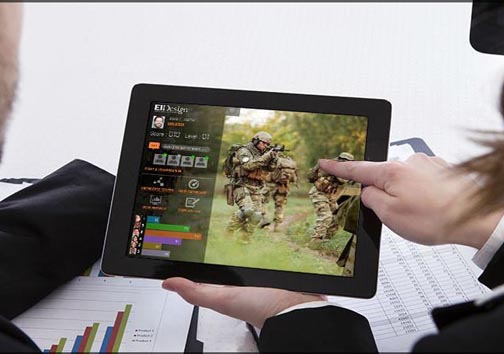
Lockdowns mean more employees will learn from home. It is imperative that instructors identify approaches to effectively engage distance learners. In this article, I show you how to drive remote learner engagement by gamifying your VILT sessions.
What Are the Challenges Trainers Face with Existing VILT Programs?
Many existing VILT courses are being modeled on legacy classroom-based ILT materials.
If they were “straight ported” from ILT to VILT mode, they are likely to lack elements of virtual interaction and engagement that remote learners expect.
Here are some of the challenges that must be addressed before you transition your ILT to creating engaging VILT programs:
- The platform: The platform you choose to host/deliver your virtual training can either make the program an unqualified success or a resounding failure. Some existing platforms limit the scope and delivery of higher-quality virtual training. Selecting the right platform requires working with a cross-sectional team of vendors, IT experts, trainers, and representative virtual learners.
- The technology: Instructor-led virtual training is more technology-dependent than classroom-based learning. Unfortunately, the underlying technology, which supports many current VILT platforms, may also prove to be a roadblock to the successful delivery of virtual training. Non-tech savvy learners and instructors, lack of vendor support, and outdated infrastructure – all collude to defeat the stated objectives of well-intended VIL-learning programs.
- The size and scope: One common challenge with existing VILT initiatives is the size of learning audiences and the scope of the training. Too big an audience (hundreds of simultaneous learners) and too broad a scope (dozens of modules – each with twenty or thirty lengthy lessons, scores of assignments, hundreds of quizzes, and tests) tends to diminish the engagement and effectiveness of today’s VILT.
- The focus: Many topics for VILT might not be appropriate for such learning. For instance, where modified behavior (as a result of training) must be observed and validated to certify success, VILT is not as conducive as in-person training. Such training must therefore be re-calibrated and refocused to make them VILT-friendly.
Existing VILT programs that lack these aspects just don’t cut it anymore. Those models don’t work to sufficiently challenge and engage learners any longer.
Today’s VILT environment requires a different level of interactivity – the type that gamification delivers and drives a high remote learner engagement.
What Are the Benefits of Using Gamifying VILT Programs?
Detractors of gamification-based learning hold that this approach (playing while learning) adds a distractive element to a serious activity (learning by playing).
However, when implemented well, gamified VILT delivers many benefits, both for learners and the organization, including:
- Enhanced learner-instructor interaction.
- Better learner engagement.
- Stronger team building outcomes.
- Higher levels of employee motivation, thanks to almost instantaneous feedback.
- Improved knowledge transfer, retention, and recall.
For learners, this translates to a better learning environment. For organizations, this translates to more cost-effective, scalable, and effective learning delivery.
What Are the Approaches to Gamify Your VILT Programs and Drive Remote Learner Engagement?
Here are 8 approaches to drive learner engagement through results-based gamification of VILT that would step up the learner engagement quotient:
- Understand your learners and their environment: Questions to address include what is their current knowledge level, what motivates them to learn, what issues are they trying to resolve, the technology and tools they now have, how will they demonstrate “success” to you. These cues would help you identify what elements you should use to gamify your VILT session.
- Recognize that the overwhelmed learners won’t learn: Deliver learning as microlearning modules; design content that’s “roomy” and “spacious” – not cluttered and densely packed, and schedule time-outs for interactivity.
- Monotony drives disengagement: Most existing VILT comprises text or audio content. Hours of voice-only learning or module after module of text-based slides can be monotonous.
- Consider including periodic (every 5 to 10 minutes) gamified activities in your sessions, such as Scavenger hunts, Polling questions, and pop-up chat bots to reduce monotony.
- Leverage mixed-mode content (video, audio, virtual tours, simulations) that also fuels learner engagement.
- Give learners control: One way to do that is to use branching scenarios so learners chart their own learning journey. Use a Choice-Challenge-Consequence model to facilitate learner decision-making on how they decide to branch-out.
- Gamify around themes, stories, case studies, characters: Create continuity and build anticipation and excitement by advancing the learning “plot” one lesson/module at a time.
- Ensuring each gaming interaction (level, round, segment) brings learners closer to the end-game and will keep VILT audiences engaged and coming back for more.
- Above all, relate the gaming action preferably to their real-world situations.
- Time your gamified interactivity: Set a sense of urgency for learner interactions – “Find the missing link in 1 minute;” “Identify what’s wrong and outline how to fix it in 3 minutes.”
- Motivate and engage the learners through rewards: Use leaderboards and reward winners with more points, badges, certificates, or marks, but others (who may not finish before the clock runs out) also receive (fewer) rewards.
- Be prompt with feedback: Design gaming activities to deliver feedback – both corrective as well as encouragement – promptly. This would ensure that the learners can assimilate it in their next actions.
If you want to deliver a more interactive, collaborative, and engaging experience to your corporate VILT participants, a great way to do that is by embracing gamification.
Adding elements such as leaderboards, badges, points, simulation, branching, and scenario-based learning will transform traditional classroom-based learning, from which most of today’s virtual training evolved, into a highly engaging, results-based learning experience for your audience.
I hope my article gives you the cues that you can use to gamify your VILT sessions and see the learner motivation, engagement, and interactions soar.
Meanwhile, if you have any specific queries, do contact me or leave a comment below.
Read More
- eBook: Virtual Training Guide: How To Future-Proof Your Virtual Training Transformation
- 8 Training Content Development Strategies for Remote Employee Training
- 24 Virtual Training Best Practices to Follow When Shifting to Remote Learning
- How Can L&D Teams Design a Virtual Learning Journey that Delivers Seamless Training Results
- 6 Immersive Self-paced Learning Strategies to Maximize the Efficiency of Virtual Training Programs



